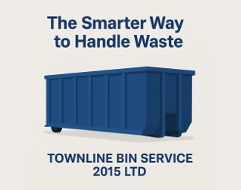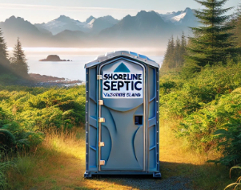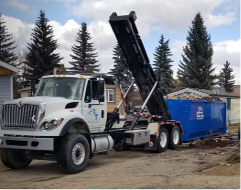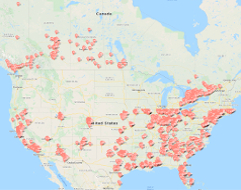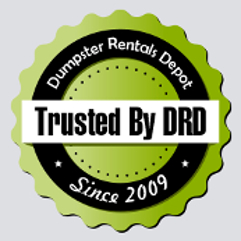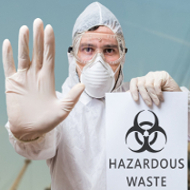Hazardous Waste
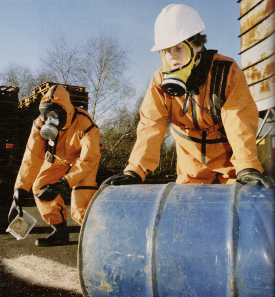
There are many reasons a material might be considered hazardous. It could be poisonous] causing illness or even death if it comes into contact with people or animals. It could burn or explode easily. It could cause chemical reactions that destroy solid materials and living tissue on contact. It could carry diseases. It could even be radioactive.
Garbage that meets any of these conditions must be handled very carefully. Some types of hazardous waste can be incinerated. Other types cannot be destroyed, but they can be contained to make them safer. Some hazardous waste is sealed into concrete or plastic to keep it from touching soil, air, or water. Other waste is mixed with ash, water, and other materials to create cement-like blocks. Pollutants that are trapped within these blocks will not escape into the environment if the blocks are handled safely.
Once hazardous waste has been treated, it must be stored. Secure landfills are the most commonly used storage method. Secure landfills are a lot like sanitary landfills, but they are built to much stricter safety standards. They also include pollution detection systems that warn operators if dangerous substances are escaping. If leaks are detected, people can take action right away to correct the problem.
Secure landfills and other hazardous-waste disposal systems work well when they are used properly. However, the disposal of hazardous waste is a recent science. Unsafe dumping grounds that were used just a few decades ago have severely polluted the soil and water in some areas. People who are exposed to the pollutants in these areas may experience nausea, headaches, breathing problems, heart trouble, and birth defects. People may also develop cancer after being exposed to hazardous waste.
What Is Being Done?
In the United States, the government is working to clean up hazardous waste sites. Money for the cleanup comes from a 1980 law called the Comprehensive Environmental Response, Compensation, and Liability Act. This law is nicknamed "Superfund." Areas that qualify for cleanup under this law are called Superfund sites. Today there are thousands of Superfund sites, and many more will eventually be added to the list. With continued effort, people should be able to improve the soil and water quality in these areas.
Action is also being taken to cut down on everyday garbage. For example, industries are doing their part by developing lighter packaging. A two-liter plastic bottle, for instance, today weighs about two-thirds what it did in the 1970s, and a plastic grocery sack weighs only about one third as much. Lighter packaging means less material to clutter landfills.
People everywhere can help as well by buying fewer items that will end up as garbage. If they do buy garbage-producing items, they should try to use them more than once. For example, an empty plastic water bottle might be refilled from the tap rather than thrown away. By taking these simple steps anybody can take positive action to reduce garbage pollution.
This post was prepared and published with the help of Hamilton Dumpster Rentals , Winnipeg Dumpster Rentals and Calgary Dumpster Rentals private roll off containers service companies.
Harry Cotten is the Dumpster Rentals Cooperative Customer Support Manager. You can find him and read more of Harry's posts by visiting Harry Cotten Google + profile.
- Published: 2013-09-06T14:39:57-07:00
- Author: Harry Cotten
